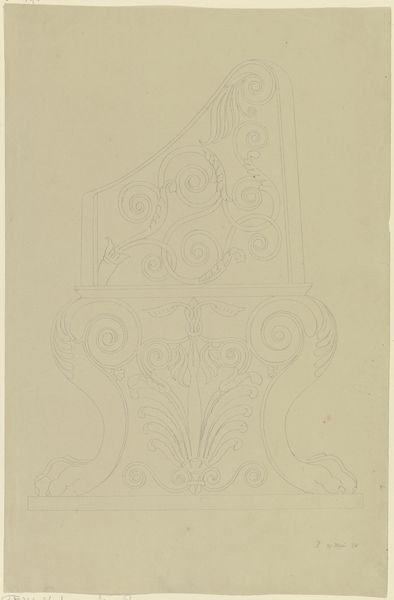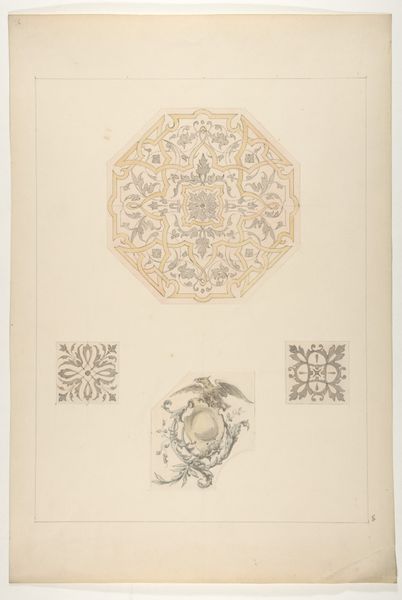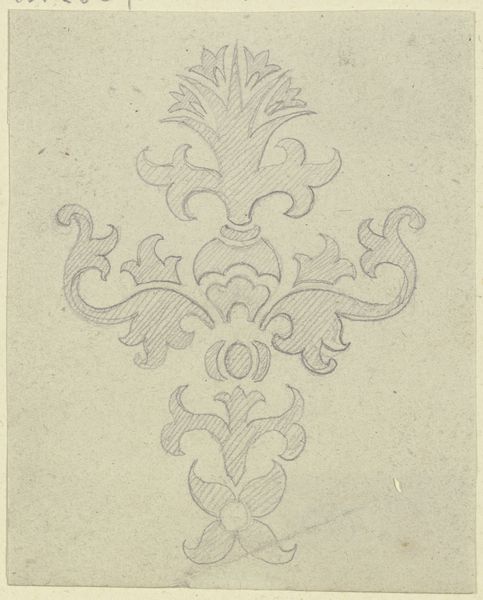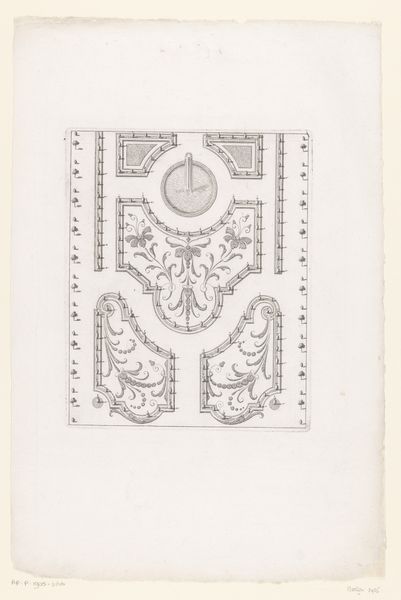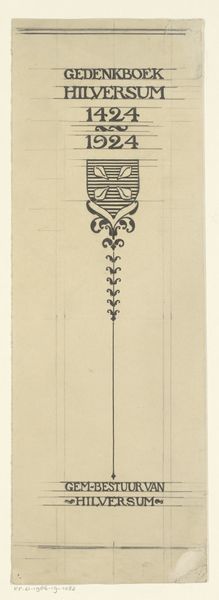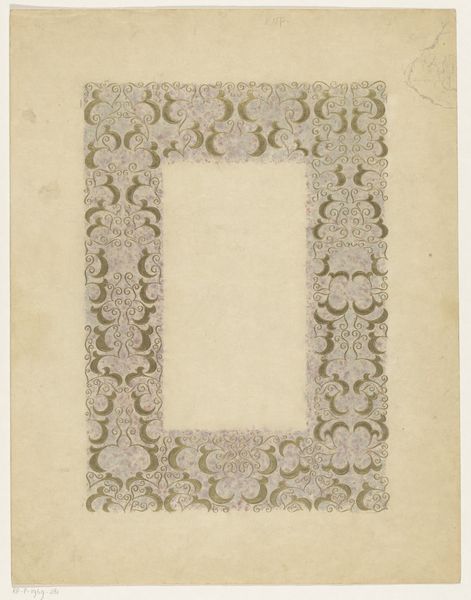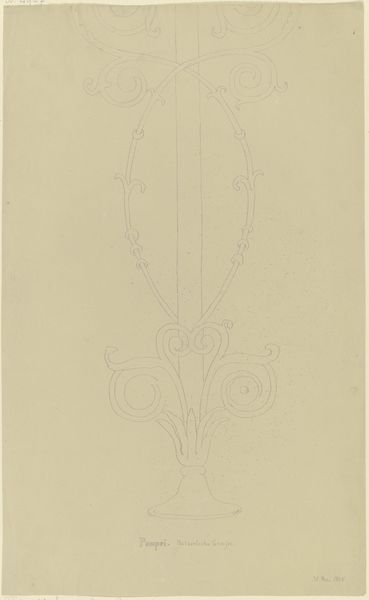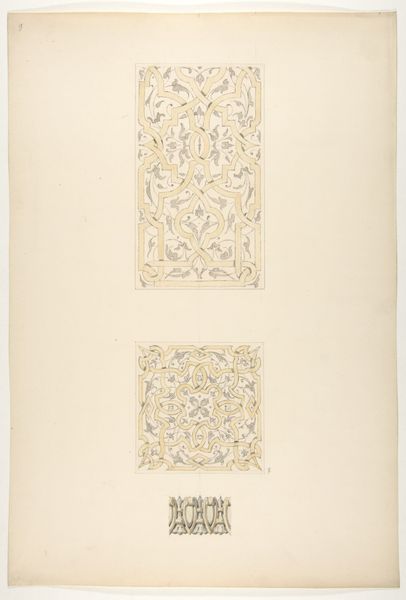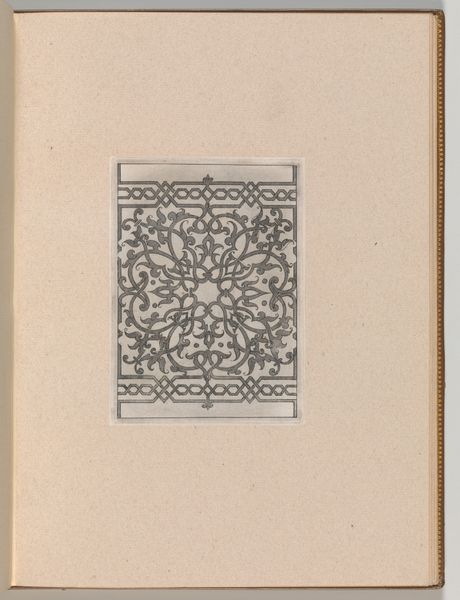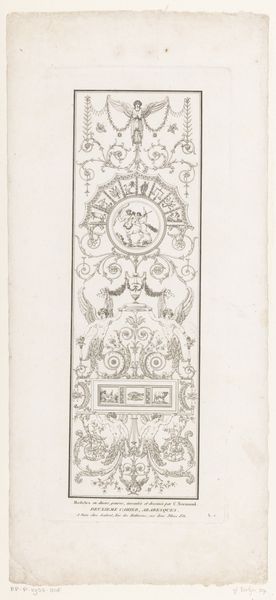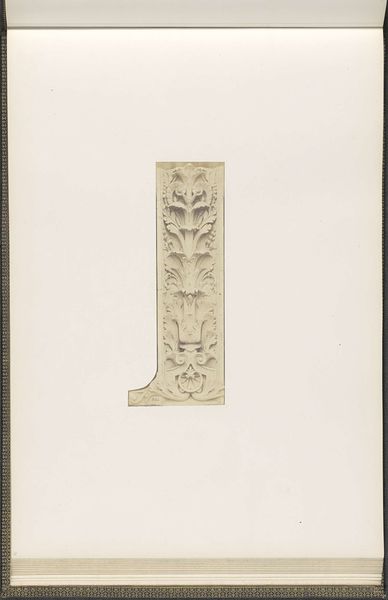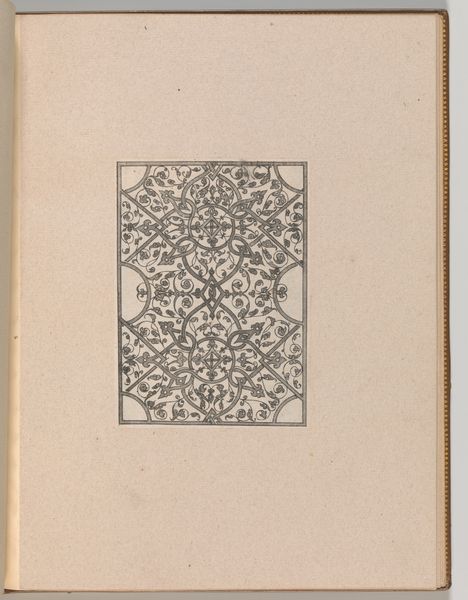
In Relief ausgeführtes vegetabiles Muster am Portal der Moschee des Sultan Hassan in Kairo 1829 - 1830
0:00
0:00
drawing, ornament, relief, paper, architecture
#
drawing
#
ornament
#
toned paper
#
16_19th-century
#
relief
#
paper
#
german
#
geometric
#
islamic-art
#
academic-art
#
architecture
Copyright: Public Domain
Editor: Here we have Friedrich Maximilian Hessemer’s "Vegetable Pattern in Relief on the Portal of the Sultan Hassan Mosque in Cairo," a drawing from around 1829. I am immediately struck by the intricate design and the almost three-dimensional quality achieved through shading on toned paper. What catches your eye about this work? Curator: I notice first how the artist reduces architectural form to pure line and shape. Observe how Hessemer presents the ornament: less as representation, but more as a system. The design operates on principles of repetition and symmetry, but does it achieve perfect balance? Where does it deviate, and what effect does that have? Editor: It does seem perfectly balanced, but now that you mention it, I notice that the floral motifs on either side aren’t mirror images. It introduces a subtle tension. How would you analyze the individual elements? Curator: Note the recurrence of geometric forms – circles, curves, and sharp angles. The artist masterfully interweaves these, creating a unified yet complex whole. Focus on how line and form work in harmony, the precise rendering suggesting an underlying structural order. The negative space is as critical as the positive forms, creating rhythm. Do you see how the eye is compelled to move across the surface? Editor: Absolutely. The interplay between positive and negative space keeps the design dynamic and engaging. This almost feels like an exercise in pure form, transcending its original architectural context. Curator: Indeed. It invites us to consider ornament as a self-contained system of visual relationships, beyond its functionality. We understand better not only its geometric complexity but the underlying principles of organization. Editor: I see that. It really emphasizes the visual experience. Thanks! Curator: And thank you! Thinking about it in this way, it brings a heightened awareness of formal elements and structure.
Comments
No comments
Be the first to comment and join the conversation on the ultimate creative platform.
